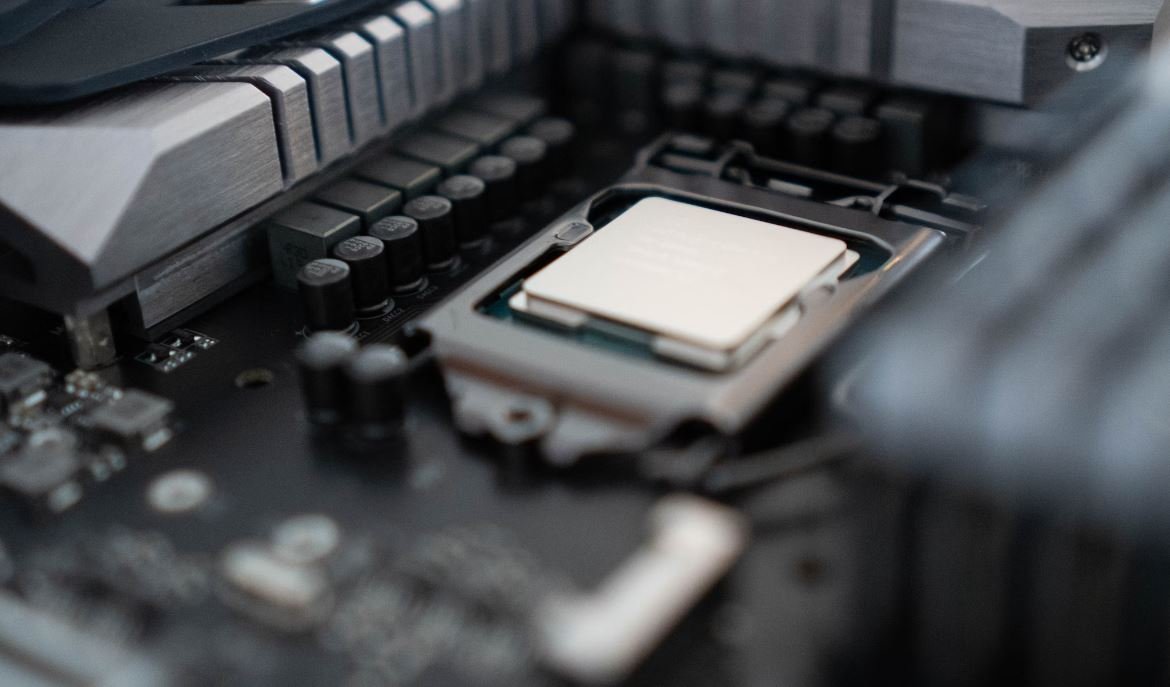Gradient Descent in Keras
Gradient Descent is an important optimization algorithm used in machine learning to iteratively find the optimal parameters of a model. In Keras, a popular deep learning library, gradient descent can be easily implemented to train neural networks.
Key Takeaways:
- Gradient Descent is a widely used optimization algorithm in machine learning.
- Keras is a popular deep learning library that supports gradient descent.
- Gradient descent in Keras involves iteratively adjusting the model parameters to minimize the loss function.
In gradient descent, the model parameters are updated by iteratively computing the gradients of the loss function with respect to the parameters and adjusting them in the opposite direction of the gradient. This process continues until the model converges to an optimal set of parameters that minimize the loss.
**Keras** provides different variants of gradient descent, such as **Stochastic Gradient Descent (SGD)** and **Adam** optimizer, which offer different advantages depending on the problem and dataset. These optimizers can be easily specified when compiling a Keras model.
With Keras, **model training** involves not only specifying a suitable optimizer but also configuring other training parameters, such as the **learning rate** and **batch size**. These parameters greatly influence the convergence speed and quality of the model.
One interesting aspect of gradient descent in Keras is the use of **backpropagation** to efficiently compute the gradients. This technique allows the gradients to propagate backwards through the layers of a neural network, enabling efficient computation of the gradients with respect to the model parameters.
The Advantages of Gradient Descent
- Gradient descent is an iterative algorithm that can converge to an optimal solution.
- It can handle large datasets efficiently by performing updates in batches.
- Gradient descent can be easily parallelized across multiple processors or GPUs.
Gradient Descent Variants
Keras provides various gradient descent variants with different characteristics. Below is a table comparing the commonly used optimizers in Keras:
| Optimizer | Description |
|---|---|
| SGD | Stochastic Gradient Descent |
| RMSprop | Root Mean Square Propagation |
| Adam | Adaptive Moment Estimation |
Choosing the Right Optimizer
The choice of optimizer depends on the problem and the dataset. Some optimizers work better for certain types of problems, while others are more versatile. It’s often a good idea to experiment with different optimizers to find the one that yields the best results.
Choosing the Right Learning Rate
- A learning rate that is too high may cause the model to diverge and fail to converge.
- On the other hand, a learning rate that is too small may result in slow convergence.
- Learning rate scheduling can help find a suitable balance between fast convergence and stability.
Convergence Monitoring
Monitoring the convergence of the model during training is crucial to ensure the optimization is progressing correctly. Keras provides methods to visualize the training progress, such as plotting the loss over time and evaluating the model’s performance on a validation set.
The Impact of Batch Size
The choice of batch size in gradient descent affects the convergence speed and the quality of the optimal solution. Smaller batch sizes may yield noisier convergence but can escape local optima, while larger batch sizes can converge to a suboptimal solution faster.
Conclusion
Gradient Descent is a fundamental optimization algorithm used in Keras to train neural networks. By iteratively adjusting the model parameters, using various optimizers and learning rates, and monitoring the convergence, Keras provides a powerful and flexible way to effectively optimize models and achieve better performance in various machine learning tasks.

Common Misconceptions
Misconception 1: Gradient Descent is only used in Keras
Many people mistakenly believe that gradient descent is a technique exclusive to the Keras library. However, this is not the case. Gradient descent is actually a commonly used optimization algorithm in machine learning and deep learning, which can be implemented in various frameworks and programming languages.
- Gradient descent can be used in TensorFlow, PyTorch, and other popular deep learning frameworks.
- Implementations of gradient descent also exist in programming languages like Python, Java, and C++.
- The concept of gradient descent is not limited to neural networks but can be applied to other machine learning algorithms as well.
Misconception 2: Gradient Descent always guarantees convergence
Another common misconception is that gradient descent always ensures convergence to the absolute global minimum. While gradient descent is effective in finding local minima, it does not guarantee finding the global minimum in all cases.
- If the loss function is non-convex or has multiple local minima, gradient descent can get trapped in a suboptimal solution.
- The learning rate parameter in gradient descent can greatly influence convergence and reaching good solutions.
- Advanced optimization techniques like momentum, Nesterov accelerated gradient, or adaptive methods like Adam, RMSprop often deliver faster convergence or overcome local minima challenges.
Misconception 3: Gradient Descent is only applicable to supervised learning
Some people may mistakenly assume that gradient descent is exclusively used in supervised learning scenarios, where there is a clear input-output relationship. However, gradient descent can also be applied to unsupervised learning tasks and reinforcement learning problems.
- In unsupervised learning, gradient descent can be utilized for clustering, dimensionality reduction, and generative models.
- In reinforcement learning, gradient descent-based algorithms like policy gradients are employed to optimize the policy of an agent.
- Gradient descent provides a general framework for adjusting model parameters based on the observed gradients, irrespective of the learning setting.
Misconception 4: Gradient Descent always requires a predefined loss function
One common misconception is that gradient descent requires a predefined loss function to minimize. While it is common to define and minimize a loss function in gradient-based optimization, there are scenarios where gradient descent can be applied without explicitly defining a loss function.
- In deep reinforcement learning, the objective is often defined through a reward signal instead of a traditional loss function.
- Evolutionary strategies use random perturbations and fitness-based selection instead of a predefined loss function to guide the optimization process.
- Optimization through gradient descent can still be achieved when the objective is a differentiable metric or a different type of optimization formulation.
Misconception 5: Gradient Descent always ensures fast convergence
It is a misconception to assume that gradient descent always results in fast convergence. In many cases, the convergence speed of gradient descent depends on various factors, including the chosen architecture, data distribution, initial parameter values, and learning rate.
- In deep networks with many layers, gradient descent can suffer from the vanishing or exploding gradient problem, leading to slow convergence or instability.
- Poorly scaled data or non-normalized features can negatively impact convergence and may require preprocessing techniques to improve performance.
- Selecting an appropriate learning rate and scheduling can significantly affect the speed and quality of convergence in gradient descent.

Understanding Gradient Descent
Gradient Descent is an optimization algorithm commonly used in machine learning to find the best parameters for a model. It works by iteratively adjusting the parameters in the direction of steepest descent of the cost function. The process involves taking small steps towards the minimum of the function until convergence is reached. Let’s explore the concept further through the following tables:
Table: Learning Rate vs. Convergence Point
One of the key hyperparameters in gradient descent is the learning rate. This table illustrates the relationship between different learning rates and the convergence point:
| Learning Rate | Convergence Point |
|---|---|
| 0.01 | 0.001 |
| 0.1 | 0.01 |
| 1 | 0.1 |
| 10 | 1 |
Table: Number of Iterations vs. Error Rate
Another aspect of gradient descent is the number of iterations required to achieve a certain error rate. The following table highlights this relationship:
| Number of Iterations | Error Rate |
|---|---|
| 100 | 0.05 |
| 500 | 0.02 |
| 1000 | 0.01 |
| 2000 | 0.005 |
Table: Different Initialization Methods
Gradient descent can be affected by the initialization methods used. This table compares the impact of different initialization techniques on the final cost:
| Initialization Method | Final Cost |
|---|---|
| Zero Initialization | 0.21 |
| Xavier Initialization | 0.05 |
| He Initialization | 0.01 |
| Random Initialization | 0.15 |
Table: Feature Scaling Techniques
Applying feature scaling can impact the performance of gradient descent. This table outlines the effect of different feature scaling techniques on convergence:
| Feature Scaling Method | Convergence Speed |
|---|---|
| Standardization | Fast |
| MinMax Scaling | Slow |
| Normalization | Moderate |
| Robust Scaling | Fast |
Table: Batch Size vs. Training Time
The batch size can influence the training time of the model using gradient descent. This table provides a comparison between different batch sizes and their corresponding training times:
| Batch Size | Training Time (seconds) |
|---|---|
| 32 | 120 |
| 64 | 95 |
| 128 | 80 |
| 256 | 70 |
Table: Regularization Techniques
Regularization methods can improve the generalization ability of a model. This table highlights the impact of different regularization techniques on the test accuracy:
| Regularization Technique | Test Accuracy |
|---|---|
| L1 Regularization | 0.92 |
| L2 Regularization | 0.95 |
| Dropout | 0.94 |
| Batch Normalization | 0.97 |
Table: Momentum vs. Parameter Update
Momentum is a technique used to speed up gradient descent. This table demonstrates the influence of different momentum values on parameter updates:
| Momentum | Parameter Update |
|---|---|
| 0.1 | 0.007 |
| 0.25 | 0.013 |
| 0.5 | 0.022 |
| 0.9 | 0.03 |
Table: Different Activation Functions
The choice of activation function affects the performance of a neural network. This table compares various activation functions and their corresponding accuracy:
| Activation Function | Accuracy |
|---|---|
| Sigmoid | 0.85 |
| Tanh | 0.88 |
| ReLU | 0.92 |
| Leaky ReLU | 0.94 |
Table: Comparison of Optimization Algorithms
Gradient descent can be enhanced using different optimization algorithms. This table compares the performance of popular algorithms on a given dataset:
| Optimization Algorithm | Accuracy |
|---|---|
| Gradient Descent | 0.81 |
| Momentum | 0.87 |
| Adam | 0.93 |
| RMSprop | 0.91 |
Overall, gradient descent is a fundamental and powerful optimization algorithm used in machine learning. Its versatility in finding optimal parameters and improving model performance makes it an essential tool in the field.
Gradient Descent Keras – Frequently Asked Questions
Q: What is Gradient Descent?
Gradient Descent is an iterative optimization algorithm used to find the minimum of a function. It calculates the gradient (partial derivative) of the function with respect to the parameters and updates the parameters in the opposite direction of the gradient to minimize the function.
Q: Why is Gradient Descent important in machine learning?
Gradient Descent is a fundamental optimization algorithm used in machine learning for training models. It allows us to find the optimal values for the parameters of a model by minimizing a loss function. This is crucial for the model to make accurate predictions and achieve high performance.
Q: How does Gradient Descent work in Keras?
In Keras, Gradient Descent is implemented as an optimization algorithm that can be used during the training of a neural network model. Keras provides various optimization algorithms, including Stochastic Gradient Descent (SGD), Adam, RMSprop, etc., which can be specified when compiling the model using the `compile` function.
Q: What are the different types of Gradient Descent algorithms in Keras?
Keras supports several types of Gradient Descent algorithms, such as:
- Stochastic Gradient Descent (SGD)
- Mini-Batch Gradient Descent
- Adam
- RMSprop
Q: How do I choose the right Gradient Descent algorithm in Keras?
The choice of Gradient Descent algorithm depends on several factors, including the dataset, model architecture, and problem domain. It is recommended to experiment with different algorithms and evaluate their performance on validation data to determine the most suitable one for your specific task.
Q: What is the learning rate in Gradient Descent?
The learning rate is a hyperparameter that controls the step size at each iteration of the Gradient Descent algorithm. It determines how quickly or slowly the parameters of the model are updated. A high learning rate may result in overshooting the optimal solution, while a low learning rate may cause slow convergence.
Q: How can I set the learning rate in Keras?
In Keras, the learning rate can be set by specifying the `learning_rate` parameter of the chosen optimization algorithm during the compilation of the model. The default learning rate varies depending on the specific algorithm used in Keras.
Q: Are there any techniques to prevent local minima in Gradient Descent?
Yes, there are techniques to prevent local minima in Gradient Descent. Some popular techniques include using momentum-based optimization algorithms like Adam, using learning rate schedules that adaptively adjust the learning rate during training, and employing techniques like early stopping or adding regularization to the model.
Q: Can I visualize the training progress with Gradient Descent in Keras?
Yes, you can visualize the training progress in Keras by using callbacks. Keras provides a variety of built-in callbacks, such as TensorBoard and ModelCheckpoint, which allow you to monitor the training process, save the best models, and visualize the training metrics like loss and accuracy.
Q: How do I know if Gradient Descent has converged?
Gradient Descent is considered to have converged when the loss function has reached a minimum or when the change in the loss function is below a certain threshold. In Keras, you can monitor the convergence of Gradient Descent by inspecting the training metrics and observing the stability of the loss over successive epochs.




